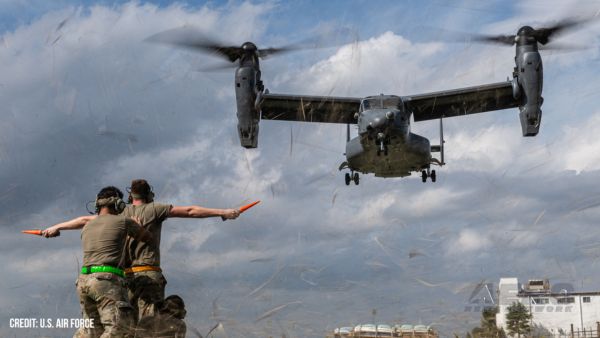Thu, Feb 01, 2024
...Loss Of Airplane Control While Performing Aerobatic Maneuvers, Which Resulted In The Airplane Entering An Inverted Flat Spin
Location: Osteen, Florida Accident Number: ERA22FA384
Date & Time: August 24, 2022, 16:39 Local Registration: N263MX
Aircraft: MXR Technologies MX2 Aircraft Damage: Substantial
Defining Event: Loss of control in flight Injuries: 2 Fatal
Flight Conducted Under: Part 91: General aviation - Other work use

Analysis: The accident flight was part of a training and demonstration flight that included a series of aerobatic maneuvers. Flight track data for the accident flight revealed that the airplane departed and maneuvered for about 7 minutes before impacting terrain almost directly under the last data point. No linear ground scar was observed at the accident site, which was indicative of the airplane having descended nearly vertically to ground impact. Additionally, the wreckage was found in an inverted orientation. Examination of the wreckage revealed no evidence of a preimpact mechanical anomaly that would have precluded normal operation of the airplane structure, the flight controls, or the engine. Estimated weight and balance calculations revealed that the airplane’s weight and its aft center of gravity were likely at or near the limit for aerobatic flight.
Given the purpose of the flight, the flight track, and the orientation of the wreckage, it is likely that the pilot lost control of the airplane while performing aerobatic maneuvers and that the airplane inadvertently entered an inverted flat spin. A fracture of the elevator torque tube at the aft bulkhead opening corresponded with the elevator control surface being in the full nose-up position when the airplane impacted the ground, which would have been a position consistent with the pilot attempting to recover from an inverted flat spin. The airplane’s weight and aft center of gravity likely contributed to the pilot’s inability to recover from the spin. Thus, the inverted flat spin likely continued until the airplane impacted terrain.
Toxicology testing revealed subtherapeutic concentration of chlorpheniramine in the pilot’s blood, which likely did not cause significant symptoms. Hydrocodone and its active metabolites (hydromorphone and dihydrocodeine) were detected in the pilot’s urine but not in his blood, so they would not have had any therapeutic effect or side effect. Thus, the detected chlorpheniramine, hydrocodone, hydromorphone, and dihydrocodeine did not contribute to this accident.
Probable Cause and Findings: The National Transportation Safety Board determines the probable cause(s) of this accident to be -- The pilot’s loss of airplane control while performing aerobatic maneuvers, which resulted in the airplane entering an inverted flat spin that continued until the airplane impacted terrain.
More News
“While legendary World War II aircraft such as the Corsair and P-51 Mustang still were widely flown at the start of the Korean War in 1950, a new age of jets rapidly came to >[...]
Decision Altitude (DA) A specified altitude (mean sea level (MSL)) on an instrument approach procedure (ILS, GLS, vertically guided RNAV) at which the pilot must decide whether to >[...]
Aero Linx: National Aviation Safety Foundation (NASF) The National Aviation Safety Foundation is a support group whose objective is to enhance aviation safety through educational p>[...]
Also: Cal Poly Aviation Club, $$un Country, Arkansas Aviation Academy, Teamsters Local 2118 In response to two recent general aviation accidents that made national headlines, more >[...]
“The FAA is tasked with ensuring our skies are safe, and they do a great job at it, but there is something about the system that is holding up the medical process. Obviously,>[...]
 Aero-News: Quote of the Day (04.28.25)
Aero-News: Quote of the Day (04.28.25) ANN's Daily Aero-Term (04.28.25): Decision Altitude (DA)
ANN's Daily Aero-Term (04.28.25): Decision Altitude (DA) ANN's Daily Aero-Linx (04.28.25)
ANN's Daily Aero-Linx (04.28.25) Airborne-Flight Training 04.24.25: GA Refocused, Seminole/Epic, WestJet v TFWP
Airborne-Flight Training 04.24.25: GA Refocused, Seminole/Epic, WestJet v TFWP Aero-News: Quote of the Day (04.29.25)
Aero-News: Quote of the Day (04.29.25)



